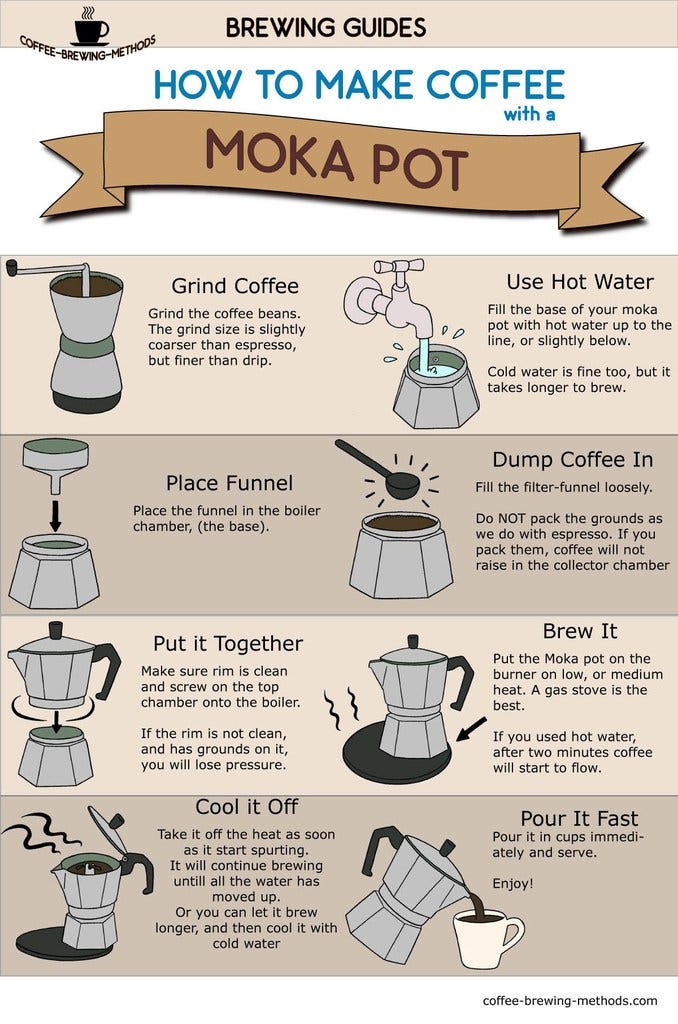Coffee Brewing Methods: Unlocking the Tricks to the Perfect Cup at Home
Coffee Brewing Methods: Unlocking the Tricks to the Perfect Cup at Home
Blog Article
The Scientific Research Behind Coffee Brewing: Just How Temperature and Time Affect Your Beverage
Understanding the scientific research behind coffee brewing reveals that temperature level and time are not simple variables but pivotal elements that determine the drink's flavor account and general quality. As we check out the nuances of these aspects, the inquiry arises: exactly how can one properly balance temperature and time to achieve that best brew?
The Chemistry of Coffee Extraction
The chemistry of coffee removal explores the complex processes that change raw coffee beans right into the fragrant beverage taken pleasure in worldwide. This change mainly entails the solubility of various compounds present in the beans, which are affected by factors such as work size, water top quality, and the brewing technique used.
Throughout the developing procedure, hot water works as a solvent, extracting soluble substances, consisting of caffeine, sugars, acids, and lipids, from the coffee grounds. Each substance adds to the flavor account, fragrance, and body of the final beverage. Acids are responsible for appetizing and bright notes, while oils contribute to a rich mouthfeel.
The extraction procedure is not uniform; various compounds dissolve at various prices. The first phases of brewing extract acids and sugars, bring about an enjoyable level of acidity, while long term removal can bring about bitterness because of over-extraction of unfavorable substances. Recognizing these chemical communications is critical for enhancing developing strategies, as the equilibrium in between removal time and water temperature level can dramatically influence the total top quality of the coffee. Inevitably, understanding the chemistry of coffee extraction is vital to attaining a flavorful and well-rounded mug.
Ideal Developing Temperatures
Discovering the best brewing temperature level is necessary for unlocking the full capacity of coffee flavors and aromas - coffee brewing methods. Study suggests that the optimal array for brewing coffee lies between 195 ° F to 205 ° F(90 ° C to 96 ° C) Within this range, the removal process properly liquifies the desirable soluble substances in coffee beans, causing a delicious and balanced mug
Brewing at reduced temperature levels, such as below 195 ° F(90 ° C ), may cause under-extraction, producing a weak and acidic mixture with muted tastes. Conversely, developing at temperatures going beyond 205 ° F(96 ° C) can result in over-extraction, generating a bitter and extreme taste because of the too much dissolution of unfavorable substances, such as tannins.
Furthermore, the perfect developing temperature can differ depending on the coffee bean kind and roast degree. For instance, lighter roasts frequently gain from slightly higher temperature levels to enhance their complex taste profiles, while darker roasts might be much better suited to lower temperature levels to reduce anger.
Ultimately, preserving accuracy in brewing temperature levels is crucial for achieving an unified equilibrium of tastes, ensuring that every cup of coffee delivers a gratifying sensory experience.
Impact of Brewing Time
Brewing time plays a crucial duty in figuring out the flavor profile and overall quality of coffee. Much shorter brewing times can result in under-extraction, leading to a sour or weak taste, as not sufficient soluble compounds are dissolved.
Optimum brewing time varies relying on the method used and the grind dimension of the coffee. A French press typically calls for regarding 4 minutes, while espresso removal is normally completed within 25 to 30 secs. It is vital to adjust developing time in conjunction with various other variables, such as water temperature and coffee-to-water proportion, to achieve the preferred flavor account.
Comprehending the influence of brewing time makes it possible for coffee enthusiasts to improve their developing techniques, inevitably improving the sensory experience of their mug (coffee brewing methods). With cautious focus to this variable, one can unlock the full capacity of the coffee, disclosing its special qualities and subtleties
Brewing Techniques and Their Effects

As an example, techniques like French press and cool mixture enable a longer steeping time, resulting in a fuller body and robust flavor as a result of increased removal of oils and soluble solids. Alternatively, coffee developing makes use of high pressure and a much shorter removal time, creating a focused shot that highlights extreme flavors and an abundant crema.
Pour-over strategies, such as Chemex or V60, supply an even more regulated removal procedure, allowing the brewer to adjust flow price and water circulation, which can boost illumination and clearness. On the other hand, percolation techniques cycle water with the coffee grounds multiple times, leading to a stronger, frequently bitter flavor.
Lastly, making use of paper filters versus metal filters can additionally affect the final taste; paper filters typically yield a cleaner mug by capturing oils and fine particles, while steel filters enable more oils to go through, contributing to a fuller mouthfeel - coffee brewing methods. Understanding these subtleties can raise the coffee experience considerably
Tips for Perfecting Your Mixture
A well-executed mixture can transform even the simplest basics coffee right into a remarkable experience. To attain this, interest to information is vital. Start with high-grade, freshly baked beans, as their flavor account reduces over time. Grind the beans simply before making to take full advantage of freshness, making sure the grind size matches your brewing technique-- coarser for French press and finer for espresso.
Water top quality plays a crucial role; use filtered water totally free from contaminations. The suitable developing temperature varies between 195 ° F and 205 ° F(90 ° C to 96 ° C ) As well hot can blister the coffee, while too awesome may under-extract tastes.
Timing is equally vital. For immersion approaches, soaking for three to 5 mins is optimal, whereas drip techniques generally take about 5 minutes. Experiment with brew times to discover your recommended strength.

Verdict
In recap, the detailed partnership in between temperature level and time is critical in the coffee developing procedure. Complying with optimum developing temperature levels in between 195 ° F and 205 ° F, together with exact timing customized to every technique, guarantees the preferred flavor profile is attained. Understanding these clinical concepts equips individuals to refine read this their developing strategies, inevitably bring about a much more satisfying and balanced coffee experience. Proficiency of these factors is important for any coffee fanatic looking for quality in their beverage.
Understanding the scientific research behind coffee brewing discloses that temperature and time are not plain variables but crucial elements that determine the drink's coffee brewing methods taste account and general high quality. Recognizing these chemical communications is critical for enhancing brewing techniques, as the equilibrium in between removal time and water temperature can significantly influence the overall high quality of the coffee.Developing time plays an essential role in establishing the flavor account and total high quality of coffee. By concentrating on these aspects-- bean quality, grind size, water temperature level, steeping time, and ratio-- you can boost your coffee brewing process, resulting in a continually remarkable mug.
In summary, the complex partnership between temperature and time is extremely important in the coffee brewing process.
Report this page